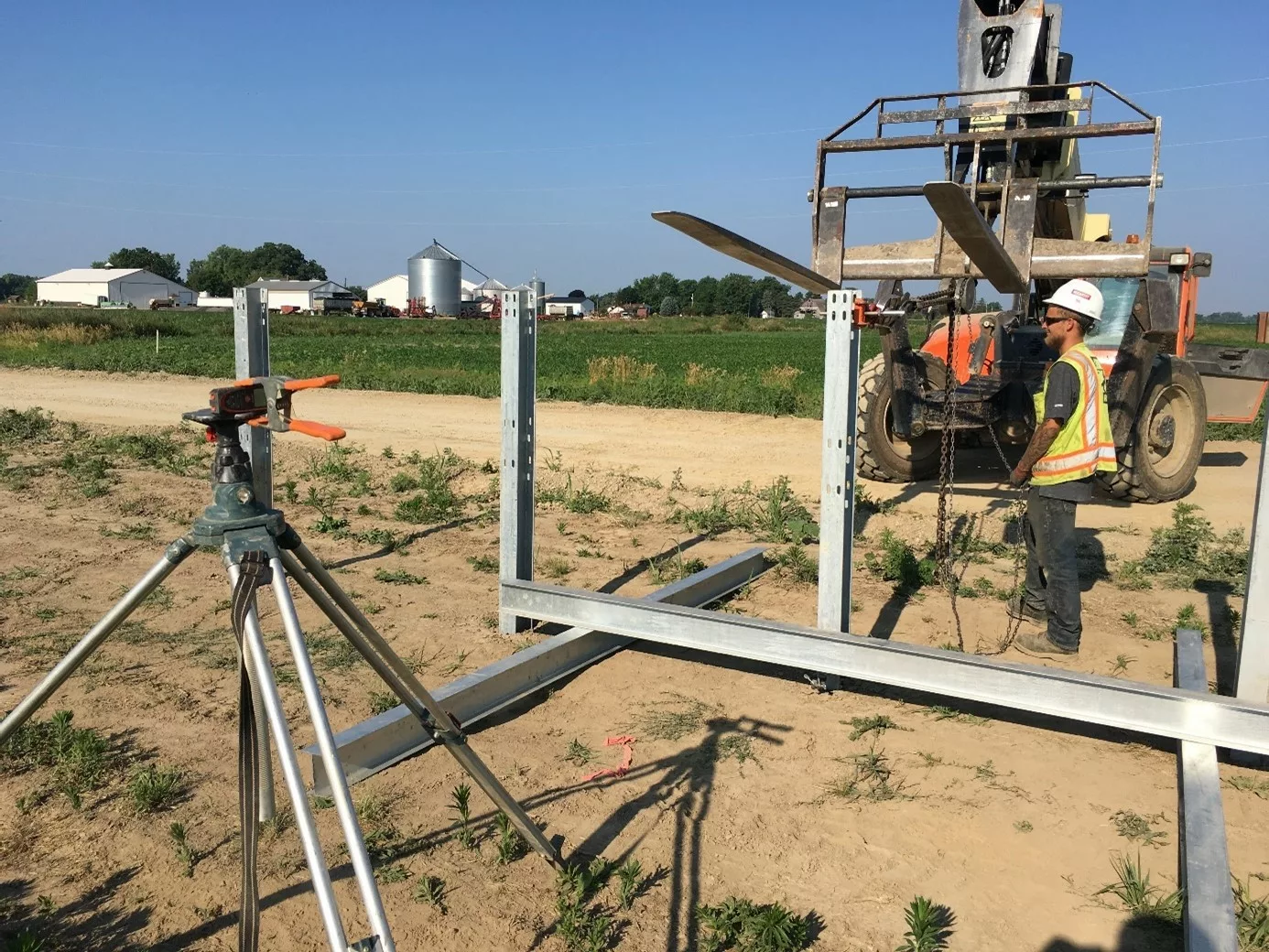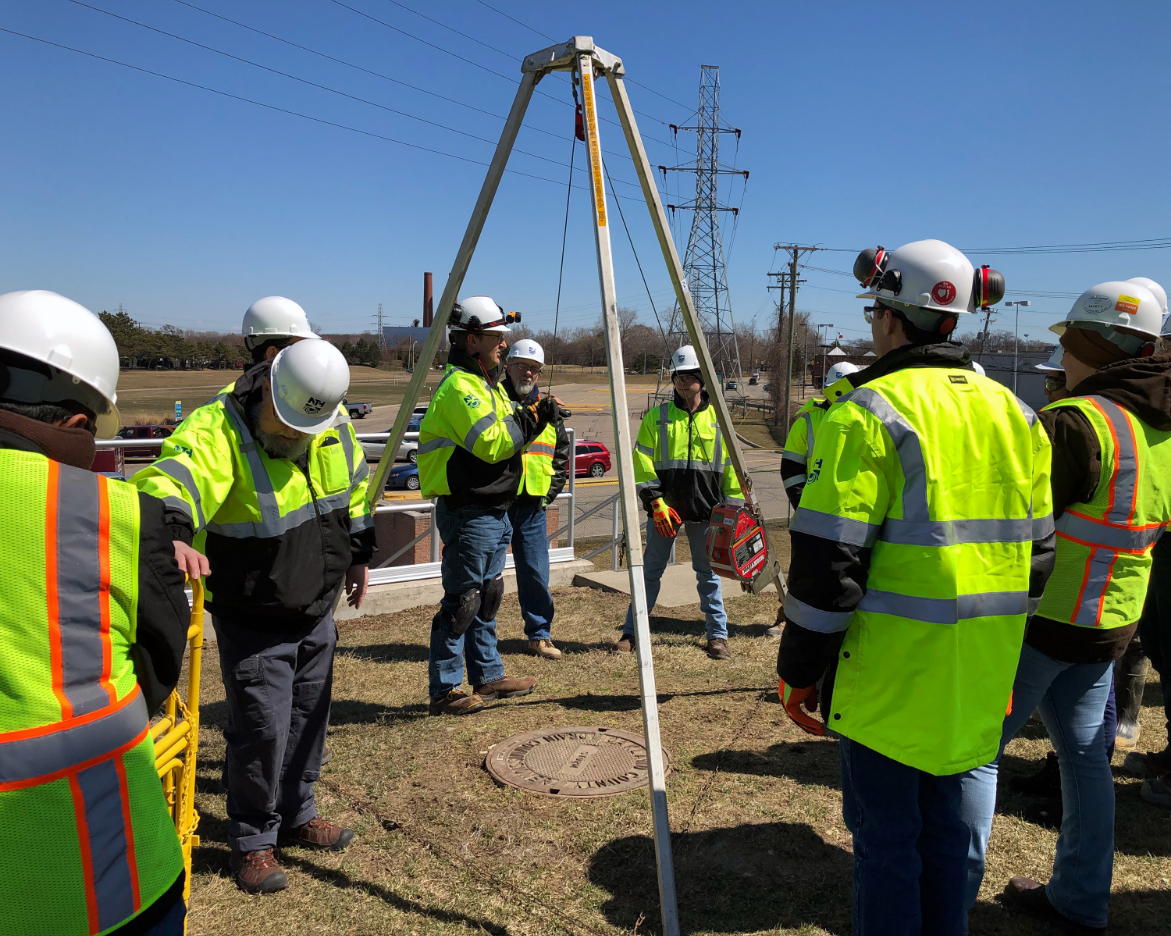Project Overview
Consumers Energy (Consumers) is constructing a 140-megawatt solar energy facility in Barry and Calhoun Counties. The proposed solar energy facility will be comprised of photovoltaic (PV) solar arrays constructed on various connected parcels. Project limits encompass approximately 2,000 acres of rural area comprised predominantly of agricultural fields. The PV arrays will be supported on steel piles and ancillary equipment will be supported on shallow foundations with helical piles or drilled piers.
NTH was selected by Consumers selected engineering, procurement, and construction contractor, Burns and McDonnell (BMcD), to conduct a site geotechnical investigation due to our over 50 years of geotechnical experience and familiarity with similar renewable energy projects conducted in nearby Shiawassee County. Subsurface investigation was conducted through drilled soil borings and pile load testing to develop soil profiles, driven pile and drilled shaft design parameters, and general construction recommendations.
Project Scope
As the engineering consultants for Burns and McDonnel (BMcD), NTH performed geotechnical exploration and investigation within the project area. Our services under this contract included:
- Soil borings
- Laboratory soil index and thermal resistivity testing
- Load testing on over 50 piles installed in the field
- Field soil electrical resistivity testing
- Geotechnical engineering, evaluation, and recommendations/reporting
In this capacity NTH conducted 53 soil borings ranging from 20 to 50 feet below ground surface under the full-time observation of an NTH geologist or field engineer, who classified each soil sample on-site. Soil samples were then sent to the lab for further classification and soil index testing.
NTH developed a pile load testing program and provided monitoring of field pile load testing on over 50 piles installed on-site. NTH used the results of the field investigation and pile load testing program to develop load-resistance curves for pile uplift, compression, and lateral performance. In locations of concern, additional load testing with longer piles was performed to better spatially characterize subsurface conditions to help our client design the PV array foundations and optimize pile embedment lengths spatially across the site. Field electrical resistivity testing was also conducted by NTH.
NTH’s geotechnical engineers used subsurface soil and groundwater conditions to develop design soil profiles, advise site preparation, grading, and earthwork recommendations, temporary excavations, and groundwater control recommendations. NTH provided shallow foundation design for mats, slabs-on-grade, and conventional spread footings were provided with design parameters including net allowable soil bearing resistance, estimated differential settlement, lateral load resistance, and recommended factors of safety for design. NTH evaluated the pile load testing data to develop driven pile and drilled shaft design recommendations included estimated ultimate skin friction and end bearing resistance values for against compression and uplift loading.
NTH’s expertise and technical expertise continue to provide clients with efficient and budget-oriented design parameters while assisting our clients to achieve their sustainability goals.
Client Benefit
NTH was able to plan and execute the field investigation and testing program safely and effectively by the required deadlines. NTH addressed clients’ concerns about risk from site variability by scheduling additional pile load tests for locations with poor and/or variable soil conditions. NTH completed the project earlier than anticipated and optimized driven pile and drilled pier design to save money.





